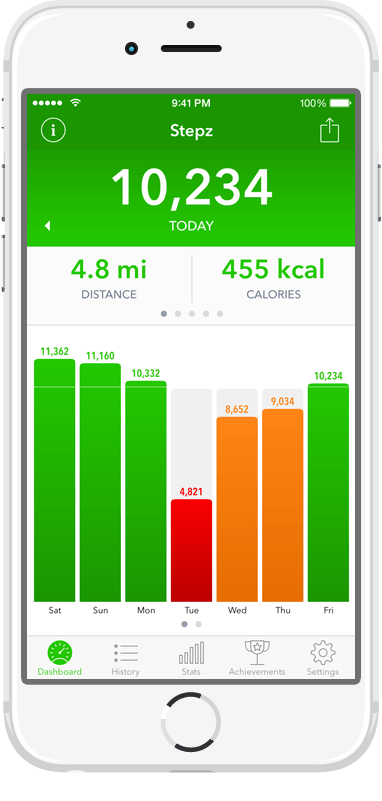
Do you have one of those nifty step counter apps? Do you pay attention to it? Do you set a daily goal? If not, maybe you should.
A group of researchers at the University of Missouri sought to determine whether a major reduction in daily normal activity reduced both insulin-stimulated blood flow and glycemic control and whether a single day’s return to activity would improve those outcomes. The study specifically looked at the number of steps per day. Starting with otherwise healthy individuals who took greater than 10,000 steps per day and then went to less than half that amount over the course of five days before returning to their normal averages of 10,000+ steps per day (which is the daily amount that is recommended by the U.S. Surgeon General).
Check out the U.S. Surgeon Generals’ 5 Step it Up Goals for Promoting Walking and Walkable Communities.
What they found was that cutting back on their normal daily physical activity, for even just five days led to decreases in the function of the inner lining of blood vessels in the legs of young, healthy study participants, causing vascular dysfunction that can have long-term effects.
In short, while it’s known that the negative effects of not exercising can be reversed, the researchers found that the vascular dysfunction resulting from five days of inactivity would require more than a single day of returning to physical activity in order to improve the situation. Think about this exponentially. If 5 days of little to no activity meant that about 3 days of moderate to vigorous activity would be necessary for the body to return to its respective normal state, in the healthy individual, then what is the implication for those who have not walked 10,000 steps in 5 years!!?? A reason to stress to your clients that what they’ve done to their body in years can’t be solved in days, or weeks.

These researchers looked at the early effects on the body’s blood vessels when a person goes from high daily physical activity, (which for the study was defined as 10,000 or more steps taken) to low daily physical activity (or less than the nationwide average of about 5,000 steps each day). They found that, although shifting activity amounts downward for just five days did not seem to affect blood flow responses to glucose ingestion, there was a significant reduction in the function of the inner lining of the blood vessels in the legs.
The research is based on what amounts to 30 minutes of moderate activity per day in the form of counting steps and daily physical activity. And though it’s different than defined exercise, such as workouts at the gym, the results point to the importance of staying active on a regular basis – use that step counter as a guide to reaching your daily step goal!
Reference:
- Reynolds, Leryn J., et al. “Acute Inactivity Impairs Glycemic Control but Not Blood Flow to Glucose Ingestion.” Medicine and science in sports and exercise (2014).







